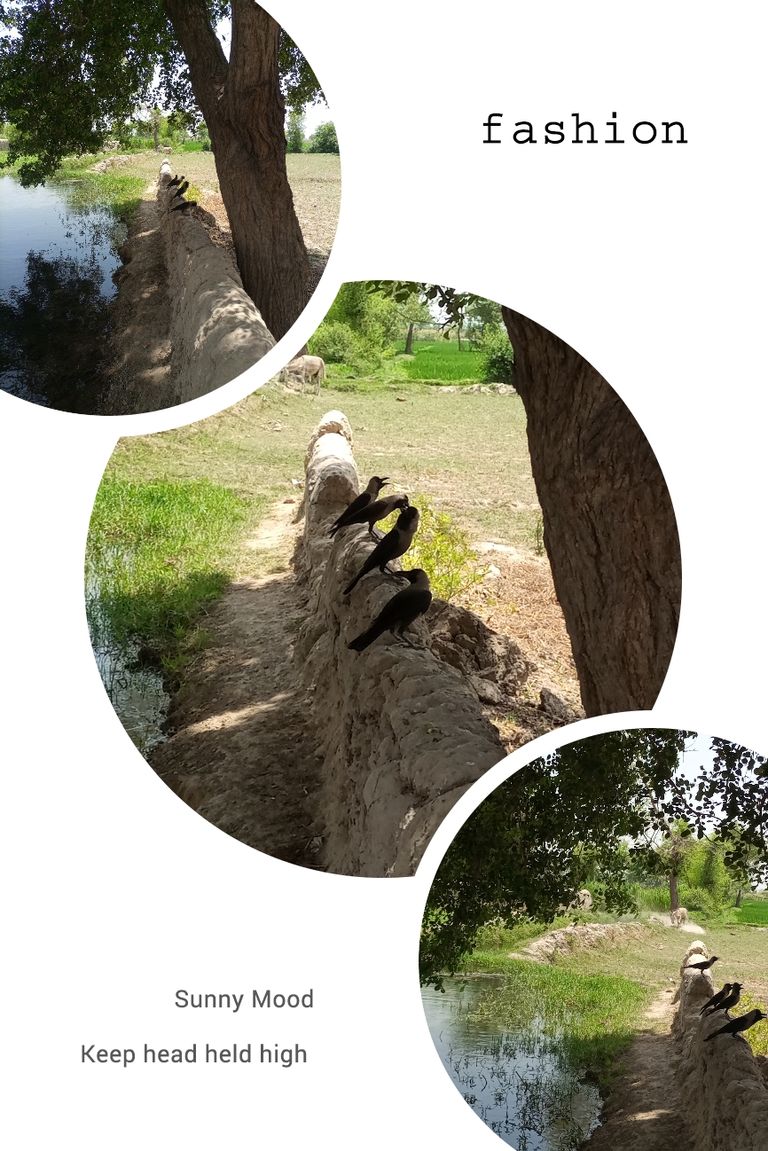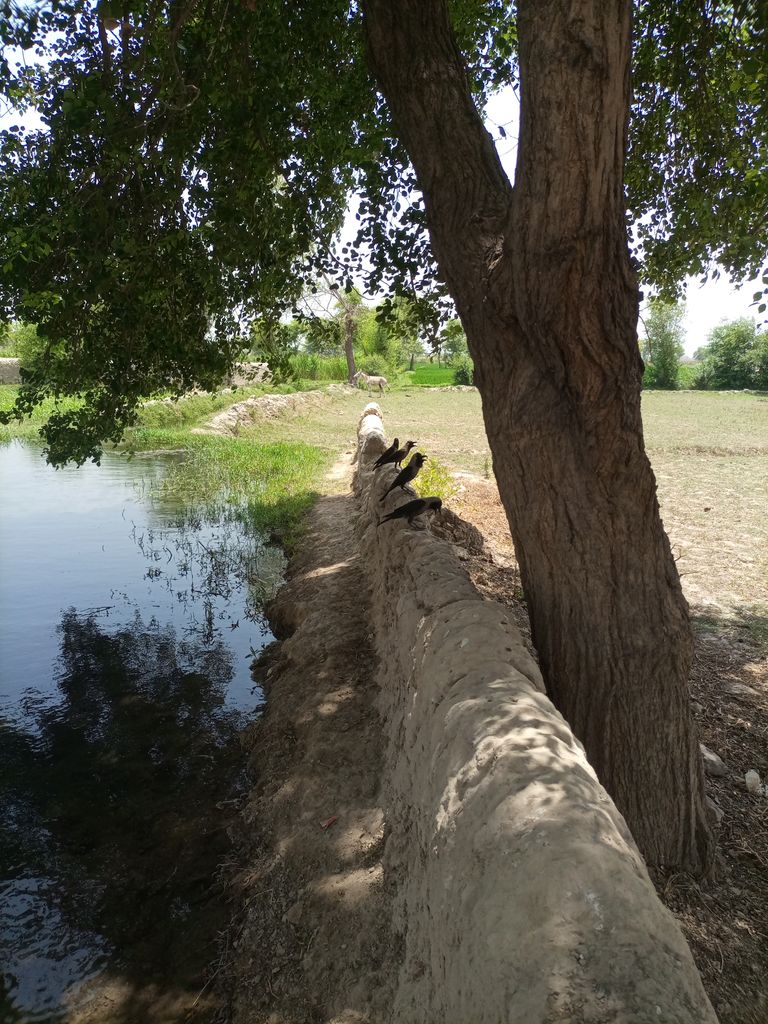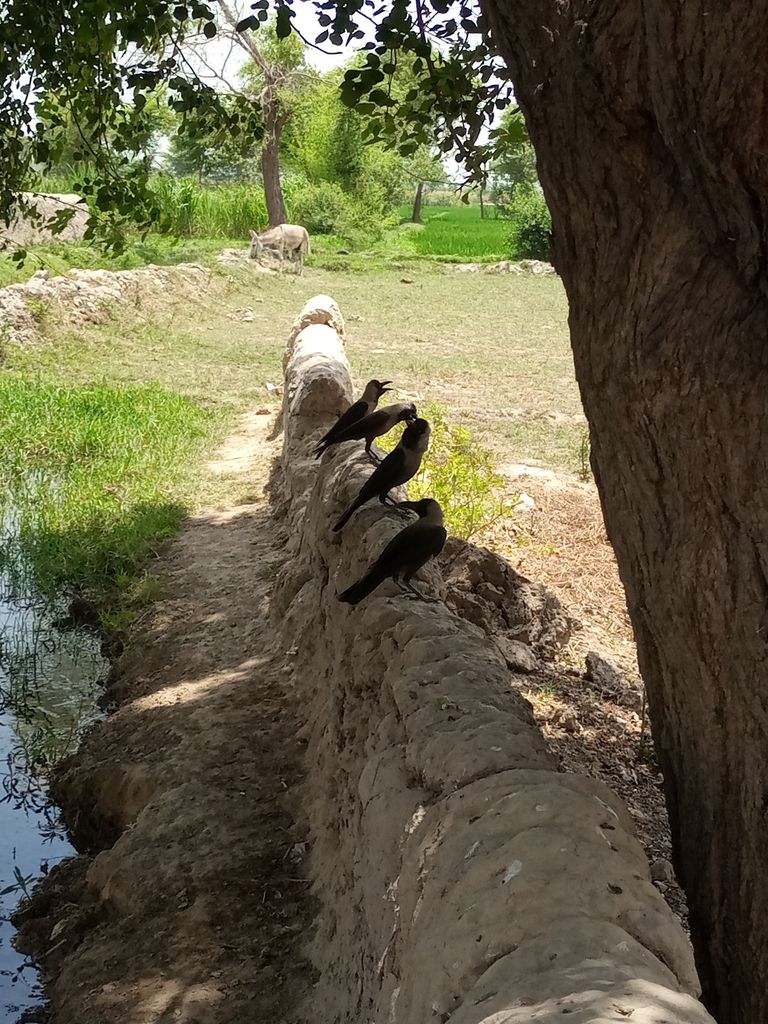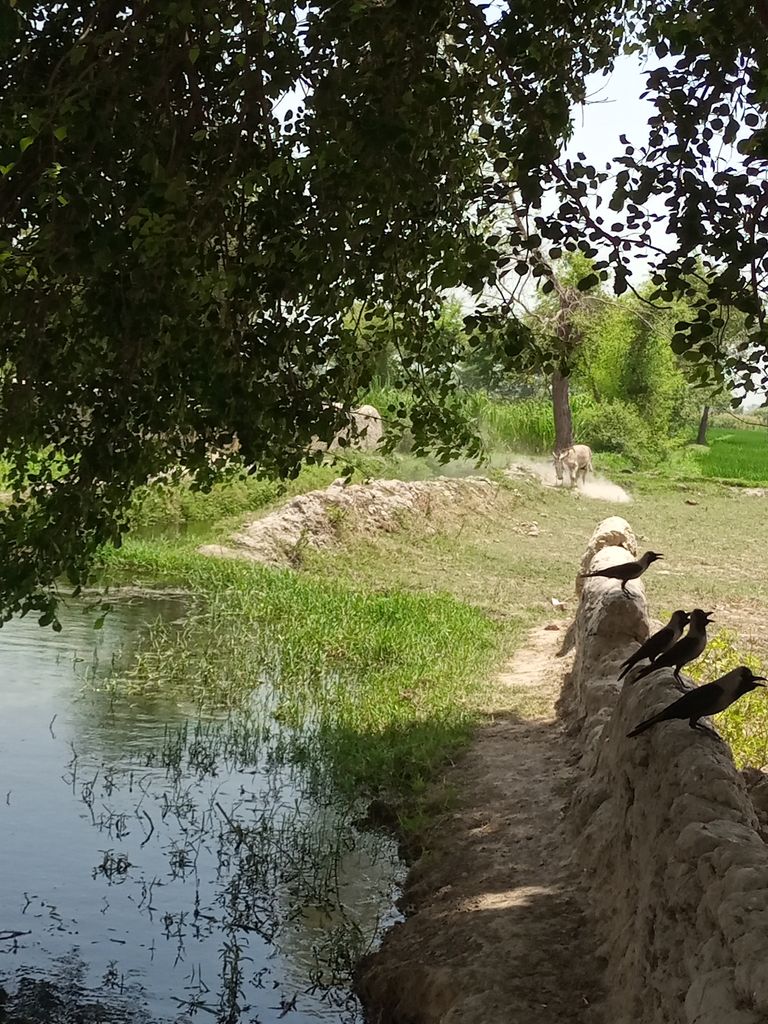Photography of Crow




Crows, members of the Corvidae family, are among the most intelligent and adaptable birds in the world. Their striking black plumage, complex social behaviors, and keen intelligence make them fascinating subjects for photographers. Capturing images of crows can be both challenging and rewarding, offering opportunities to explore themes of nature, urban wildlife, and avian intelligence.
Intelligence and Behavior
Crows exhibit a range of intelligent behaviors, including tool use, problem solving, and social interactions. Documenting these behaviors can result in compelling and thought provoking images.
Aesthetic Appeal
The stark black plumage of crows contrasts beautifully with various backgrounds, creating striking visual compositions. Their expressive eyes and varied postures add to their photographic allure.
Symbolism
Crows are often associated with mystery, intelligence, and transformation in various cultures. Their presence in a photograph can imbue the image with symbolic meaning and emotional depth.
Equipment and Techniques
Camera and Lenses
DSLR or Mirrorless Camera
These offer the flexibility and image quality needed to capture the fine details of a crow’s plumage and behavior.
Telephoto Lens
A lens with a focal length of 200mm or more is ideal for capturing detailed shots without disturbing the birds.
Wide-Angle Lens
Useful for capturing crows in their environment, whether in urban or natural settings.
Settings Shutter Speed
Use a fast shutter speed to freeze the motion of crows in flight.
Aperture
A wide aperture helps to isolate the subject and create a pleasing bokeh effect.
ISO
Adjust ISO settings to balance exposure, particularly in low light conditions common at dawn or dusk when crows are most active.
Techniques for Capturing Stunning Crow Photos
Patience and Observation
Spend time observing crows to understand their patterns and behaviors. Patience is key to capturing the perfect moment.
Stealth and Distance
Crows are wary of humans. Use a telephoto lens to maintain a respectful distance and avoid startling them.
Natural Light
Early morning or late afternoon light provides a soft, golden quality that enhances the texture of the crow’s feathers.
Backgrounds and Composition
Pay attention to the background to avoid distractions and enhance the contrast with the crow’s dark plumage. Utilize the rule of thirds to create balanced compositions.
Behavioral Shots
Aim to capture unique behaviors such as foraging, interacting with other crows, or using tools. These shots tell a story and highlight the intelligence of these birds.
Post-Processing Tips
Contrast and Exposure
Adjust contrast and exposure to ensure details in the crow’s feathers are visible.
Sharpening
Apply sharpening selectively to enhance the details in the crow’s plumage and eyes.
Noise Reduction
Use noise reduction tools carefully to maintain detail while minimizing grain, especially if shooting at high ISO settings.
Ethical Considerations
Minimize Disturbance
Avoid causing stress or disturbance to crows, particularly during nesting season.
Respect Wildlife
Follow ethical wildlife photography guidelines, ensuring that your presence does not negatively impact the birds or their habitat.
Avoid Baiting
Do not use food to lure crows into specific poses or locations, as this can alter their natural behavior and diet.
Photographing crows can be a deeply rewarding experience, offering a blend of artistic challenge and natural observation. By understanding their behavior, using the right equipment, and applying thoughtful techniques, photographers can capture stunning images that highlight the beauty and intelligence of these remarkable birds. Whether you are a seasoned photographer or a beginner, the pursuit of crow photography can enhance your skills and appreciation for the avian world.
Crows sitting under the tree on wall
The Fascinating Behavior of Crows Sitting Under Trees
Crows are among the most intelligent and adaptable birds found around the world. Their behaviors often intrigue both scientists and bird enthusiasts. One common sight is crows sitting under a tree, especially on a wall or similar structure. This behavior can be attributed to several factors, including social interaction, environmental advantages, and safety concerns.
Social Interaction and Communication
Crows are highly social birds that live in family groups. Sitting under a tree on a wall provides them with a vantage point for observing their surroundings and communicating with other members of their group. These birds use a complex system of vocalizations and body language to convey messages, warn of dangers, and maintain social bonds.
When crows gather under a tree, they may be engaging in social activities such as grooming each other, which helps strengthen social ties and reduce tension within the group. The shaded area under the tree also offers a comfortable spot for these interactions, especially during warmer parts of the day.
Environmental and Practical Advantages
Trees provide shade, which is particularly beneficial during hot weather. The cooler temperatures under a tree make it an ideal resting spot for crows. Additionally, trees can offer some protection from the elements, such as rain or strong winds.
Sitting on a wall gives crows a strategic height advantage, allowing them to spot potential threats from a distance. This elevated position also helps them keep an eye on food sources and opportunities for scavenging. Walls near trees often provide a clear line of sight, making it easier for crows to detect predators or other dangers.
Safety and Predation
Crows are preyed upon by various animals, including larger birds of prey and mammals. Being under a tree on a wall can offer a combination of concealment and escape routes. The tree's branches provide cover, making it harder for predators to spot the crows. If a threat is detected, the wall allows for a quick launch into flight, utilizing the tree's canopy as a protective barrier.
Moreover, the communal presence of multiple crows acts as a deterrent to predators. Crows are known for their aggressive mobbing behavior, where they collectively harass and drive away potential threats. By gathering in a group under a tree, they enhance their collective security.
Behavioral Observations
Researchers have observed that crows often choose specific trees and walls repeatedly, indicating a preference for certain locations based on previous positive experiences. These preferred spots are usually strategic in terms of safety, food availability, and social interaction opportunities.
Additionally, the choice of sitting under a tree on a wall may vary with seasons. During breeding seasons, these locations may serve as lookout points to protect their nests, while in non-breeding seasons, they might be used more for social gatherings and feeding.
The behavior of crows sitting under trees on walls is a multifaceted phenomenon driven by social, environmental, and safety considerations. Their intelligence allows them to select spots that offer the best advantages for communication, comfort, and protection. Observing these behaviors provides valuable insights into the complex lives of these remarkable birds, highlighting their adaptability and social complexity.
Urdu
کوے کی فوٹوگرافی۔
کوے، کورویڈی خاندان کے افراد، دنیا کے سب سے ذہین اور موافق پرندوں میں سے ہیں۔ ان کے حیرت انگیز سیاہ پلمج، پیچیدہ سماجی رویے، اور گہری ذہانت انہیں فوٹوگرافروں کے لیے دلچسپ موضوع بناتی ہے۔ کووں کی تصاویر لینا مشکل اور فائدہ مند دونوں ہو سکتا ہے، جو فطرت، شہری جنگلی حیات، اور ایویئن انٹیلی جنس کے موضوعات کو دریافت کرنے کے مواقع فراہم کرتا ہے۔
ذہانت اور برتاؤ
کوے ذہین رویوں کی ایک حد کی نمائش کرتے ہیں، بشمول آلے کا استعمال، مسئلہ حل کرنا، اور سماجی تعامل۔ ان طرز عمل کو دستاویزی بنانے کے نتیجے میں زبردست اور سوچنے پر اکسانے والی تصاویر بن سکتی ہیں۔
جمالیاتی اپیل
کوّوں کا سیاہ رنگ کا رنگ مختلف پس منظروں سے خوبصورتی سے متصادم ہے، جس سے حیرت انگیز بصری کمپوزیشن بنتی ہے۔ ان کی تاثراتی آنکھیں اور متنوع کرنسی ان کی فوٹو گرافی کی رغبت میں اضافہ کرتے ہیں۔
علامت پرستی
کوے اکثر اسرار، ذہانت اور مختلف ثقافتوں میں تبدیلی سے وابستہ ہوتے ہیں۔ تصویر میں ان کی موجودگی تصویر کو علامتی معنی اور جذباتی گہرائی سے متاثر کر سکتی ہے۔
سازوسامان اور تکنیک
کیمرہ اور لینس
ڈی ایس ایل آر یا مرر لیس کیمرہ
یہ لچکدار اور تصویری معیار پیش کرتے ہیں جو کوے کے پلمج اور رویے کی عمدہ تفصیلات کو حاصل کرنے کے لیے درکار ہے۔
ٹیلی فوٹو لینس
200 ملی میٹر یا اس سے زیادہ فوکل لینتھ والا لینس پرندوں کو پریشان کیے بغیر تفصیلی شاٹس لینے کے لیے بہترین ہے۔
وائڈ اینگل لینس
کووں کو ان کے ماحول میں پکڑنے کے لیے مفید ہے، چاہے وہ شہری ہوں یا قدرتی ماحول میں۔
سیٹنگز شٹر سپیڈ
پرواز میں کووں کی حرکت کو منجمد کرنے کے لیے تیز شٹر سپیڈ استعمال کریں۔
یپرچر
ایک وسیع یپرچر موضوع کو الگ کرنے اور ایک خوشگوار بوکیہ اثر پیدا کرنے میں مدد کرتا ہے۔
آئی ایس او
ایکسپوژر کو متوازن کرنے کے لیے آئی ایس او سیٹنگز کو ایڈجسٹ کریں، خاص طور پر کم روشنی والے حالات میں جو فجر یا شام کے وقت عام ہوتے ہیں جب کوے زیادہ متحرک ہوتے ہیں۔
شاندار کوے کی تصاویر لینے کی تکنیک
صبر اور مشاہدہ
کووں کے نمونوں اور طرز عمل کو سمجھنے کے لیے ان کا مشاہدہ کرنے میں وقت گزاریں۔ صبر کامل لمحے کو حاصل کرنے کی کلید ہے۔
چپکے اور فاصلہ
کوے انسانوں سے ہوشیار رہتے ہیں۔ قابل احترام فاصلہ برقرار رکھنے اور انہیں چونکانے سے بچنے کے لیے ٹیلی فوٹو لینز کا استعمال کریں۔
قدرتی روشنی
صبح سویرے یا دیر سے دوپہر کی روشنی ایک نرم، سنہری معیار فراہم کرتی ہے جو کوے کے پنکھوں کی ساخت کو بڑھاتی ہے۔
پس منظر اور کمپوزیشن
خلفشار سے بچنے کے لیے پس منظر پر دھیان دیں اور کوے کے گہرے پلمج کے ساتھ تضاد کو بہتر بنائیں۔ متوازن کمپوزیشن بنانے کے لیے تیسرے کے اصول کا استعمال کریں۔
سلوک شاٹس
انوکھے طرز عمل کو پکڑنے کا مقصد جیسے چارہ لگانا، دوسرے کووں کے ساتھ بات چیت کرنا، یا اوزار استعمال کرنا۔ یہ شاٹس ایک کہانی سناتے ہیں اور ان پرندوں کی ذہانت کو اجاگر کرتے ہیں۔
پوسٹ پروسیسنگ کی تجاویز
تضاد اور نمائش
اس بات کو یقینی بنانے کے لیے کہ کوے کے پروں میں تفصیلات نظر آرہی ہیں، اس کے برعکس اور نمائش کو ایڈجسٹ کریں۔
تیز کرنا
کوے کے پلمیج اور آنکھوں میں تفصیلات کو بڑھانے کے لیے انتخابی طور پر تیز کرنے کا اطلاق کریں۔
شور کی کمی
اناج کو کم سے کم کرتے وقت تفصیل کو برقرار رکھنے کے لیے شور کو کم کرنے والے ٹولز کا احتیاط سے استعمال کریں، خاص طور پر اگر اعلی ISO سیٹنگز پر شوٹنگ کر رہے ہوں۔
اخلاقی تحفظات
خلل کو کم سے کم کریں۔
کووں کو تناؤ یا پریشانی پیدا کرنے سے بچیں، خاص طور پر گھونسلے کے موسم میں۔
جنگلی حیات کا احترام کریں۔
اخلاقی وائلڈ لائف فوٹو گرافی کے رہنما خطوط پر عمل کریں، اس بات کو یقینی بناتے ہوئے کہ آپ کی موجودگی پرندوں یا ان کے رہائش گاہ پر منفی اثر نہ ڈالے۔
بیٹنگ سے پرہیز کریں۔
کووں کو مخصوص پوز یا جگہوں پر آمادہ کرنے کے لیے کھانے کا استعمال نہ کریں، کیونکہ اس سے ان کے قدرتی رویے اور خوراک میں تبدیلی آ سکتی ہے۔
کووں کی تصویر کشی ایک گہرا فائدہ مند تجربہ ہو سکتا ہے، جو فنکارانہ چیلنج اور قدرتی مشاہدے کا امتزاج پیش کرتا ہے۔ ان کے رویے کو سمجھ کر، صحیح آلات کا استعمال کرتے ہوئے، اور سوچی سمجھی تکنیکوں کا استعمال کرتے ہوئے، فوٹوگرافر شاندار تصاویر کھینچ سکتے ہیں جو ان قابل ذکر پرندوں کی خوبصورتی اور ذہانت کو نمایاں کرتی ہیں۔ چاہے آپ ایک تجربہ کار فوٹوگرافر ہوں یا ابتدائی، کوے کی فوٹو گرافی کا حصول آپ کی مہارتوں اور ایویئن دنیا کے لیے تعریف کو بڑھا سکتا ہے۔
کوے دیوار پر درخت کے نیچے بیٹھے ہیں۔
درختوں کے نیچے بیٹھے کوّوں کا دلکش رویہ
کوے دنیا بھر میں پائے جانے والے سب سے ذہین اور موافق پرندوں میں سے ہیں۔ ان کے رویے اکثر سائنسدانوں اور پرندوں کے شوقین دونوں کو پریشان کرتے ہیں۔ ایک عام نظر یہ ہے کہ کوے درخت کے نیچے بیٹھے ہیں، خاص طور پر دیوار یا اسی طرح کے ڈھانچے پر۔ اس رویے کو کئی عوامل سے منسوب کیا جا سکتا ہے، بشمول سماجی تعامل، ماحولیاتی فوائد، اور حفاظتی خدشات۔
سماجی تعامل اور مواصلات
کوے انتہائی سماجی پرندے ہیں جو خاندانی گروہوں میں رہتے ہیں۔ دیوار پر درخت کے نیچے بیٹھنا انہیں اپنے اردگرد کے ماحول کا مشاہدہ کرنے اور اپنے گروپ کے دیگر اراکین کے ساتھ بات چیت کرنے کے لیے ایک بہترین مقام فراہم کرتا ہے۔ یہ پرندے پیغامات پہنچانے، خطرات سے خبردار کرنے اور سماجی بندھنوں کو برقرار رکھنے کے لیے آواز اور جسمانی زبان کا ایک پیچیدہ نظام استعمال کرتے ہیں۔
جب کوے درخت کے نیچے جمع ہوتے ہیں، تو وہ سماجی سرگرمیوں میں مشغول ہو سکتے ہیں جیسے کہ ایک دوسرے کو تیار کرنا، جو سماجی تعلقات کو مضبوط بنانے اور گروپ کے اندر تناؤ کو کم کرنے میں مدد کرتا ہے۔ درخت کے نیچے سایہ دار علاقہ بھی ان تعاملات کے لیے ایک آرام دہ جگہ پیش کرتا ہے، خاص طور پر دن کے گرم حصوں میں۔
ماحولیاتی اور عملی فوائد
درخت سایہ فراہم کرتے ہیں، جو خاص طور پر گرم موسم میں فائدہ مند ہوتا ہے۔ درخت کے نیچے ٹھنڈا درجہ حرارت اسے کووں کے لیے آرام کرنے کا ایک بہترین مقام بناتا ہے۔ مزید برآں، درخت عناصر سے کچھ تحفظ فراہم کر سکتے ہیں، جیسے بارش یا تیز ہواؤں۔
دیوار پر بیٹھنے سے کووں کو ایک اسٹریٹجک اونچائی کا فائدہ ملتا ہے، جس سے وہ ممکنہ خطرات کو دور سے دیکھ سکتے ہیں۔ یہ بلند مقام انہیں کھانے کے ذرائع اور صفائی کے مواقع پر نظر رکھنے میں بھی مدد کرتا ہے۔ درختوں کے قریب دیواریں اکثر نظر کی واضح لکیر فراہم کرتی ہیں، جس سے کووں کے لیے شکاریوں یا دیگر خطرات کا پتہ لگانا آسان ہو جاتا ہے۔
سیفٹی اور پریڈیشن
کوّے کو مختلف جانور شکار کرتے ہیں، جن میں بڑے پرندے اور ممالیہ بھی شامل ہیں۔ دیوار پر درخت کے نیچے رہنا چھپانے اور فرار کے راستوں کا مجموعہ پیش کر سکتا ہے۔ درخت کی شاخیں ڈھانپ دیتی ہیں، جس سے شکاریوں کے لیے کووں کو تلاش کرنا مشکل ہو جاتا ہے۔ اگر کسی خطرے کا پتہ چل جاتا ہے، تو دیوار درخت کی چھتری کو حفاظتی رکاوٹ کے طور پر استعمال کرتے ہوئے، پرواز میں تیزی سے لانچ کرنے کی اجازت دیتی ہے۔
مزید برآں، متعدد کووں کی اجتماعی موجودگی شکاریوں کے لیے ایک رکاوٹ کا کام کرتی ہے۔ کوے اپنے جارحانہ ہجوم کے رویے کے لیے مشہور ہیں، جہاں وہ اجتماعی طور پر ہراساں کرتے ہیں اور ممکنہ خطرات کو دور کرتے ہیں۔ ایک درخت کے نیچے ایک گروہ میں جمع ہو کر، وہ اپنی اجتماعی سلامتی کو بڑھاتے ہیں۔
رویے کے مشاہدات
محققین نے مشاہدہ کیا ہے کہ کوے اکثر مخصوص درختوں اور دیواروں کا بار بار انتخاب کرتے ہیں، جو پچھلے مثبت تجربات کی بنیاد پر مخصوص مقامات کے لیے ترجیح کی نشاندہی کرتے ہیں۔ یہ ترجیحی مقامات عام طور پر حفاظت، خوراک کی دستیابی، اور سماجی تعامل کے مواقع کے لحاظ سے حکمت عملی کے حامل ہوتے ہیں۔
مزید برآں، دیوار پر درخت کے نیچے بیٹھنے کا انتخاب موسموں کے ساتھ مختلف ہو سکتا ہے۔ افزائش کے موسموں کے دوران، یہ مقامات اپنے گھونسلوں کی حفاظت کے لیے تلاش کے لیے کام کر سکتے ہیں، جبکہ غیر افزائش کے موسموں میں، یہ سماجی اجتماعات اور کھانا کھلانے کے لیے زیادہ استعمال کیے جا سکتے ہیں۔
دیواروں پر درختوں کے نیچے بیٹھے کوّوں کا برتاؤ ایک کثیر جہتی رجحان ہے جو سماجی، ماحولیاتی اور حفاظتی تحفظات سے چلتا ہے۔ ان کی ذہانت انہیں ایسے مقامات کو منتخب کرنے کی اجازت دیتی ہے جو مواصلات، آرام اور تحفظ کے لیے بہترین فوائد پیش کرتے ہیں۔ ان طرز عمل کا مشاہدہ ان قابل ذکر پرندوں کی پیچیدہ زندگیوں کے بارے میں قیمتی بصیرت فراہم کرتا ہے، ان کی موافقت اور سماجی پیچیدگی کو اجاگر کرتا ہے۔
** Your post has been upvoted (1.59 %) **
Curation Trail is Open!
Join Trail Here
Delegate more BP for bigger Upvote + Daily BLURT 😉
Delegate BP Here
Upvote
https://blurtblock.herokuapp.com/blurt/upvote
Thank you 🙂 @tomoyan